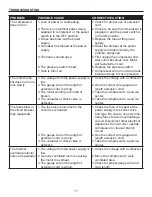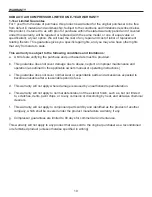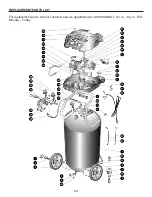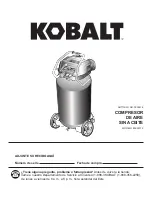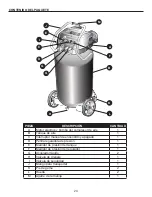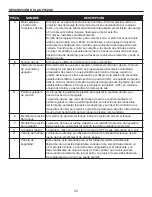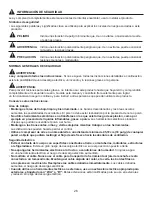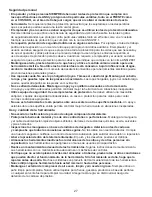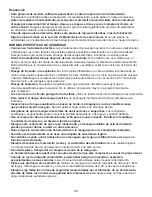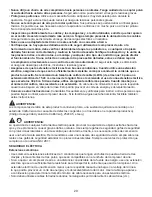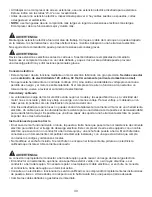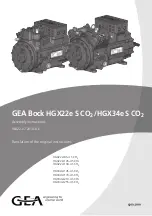
15
9
OPERATING INSTRUCTIONS
Checking the Safety Valve
WARNING:
Do not attempt to tamper with safety valve.
Anything loosened from this device could fly up and
hit you. Failure to heed this warning could result in
death or serious personal injury.
The safety valve will automatically release air if the
air receiver pressure exceeds the preset maximum.
The valve should be checked before each day of
use by pulling the ring by hand.
•
Turn the air compressor on and allow the tank
to fill. The compressor will shut off when the
pressure reaches the preset maximum.
•
Turn the air compressor off.
•
Pull the ring on the safety valve (I) to release air
for twenty seconds (see Fig. 9).
•
Release the ring. Air must immediately stop escaping when the ring is released. Any continued loss
of air after releasing the safety valve ring indicates a problem with the safety valve. Discontinue use
and seek service before continued use of the air compressor.
WARNING:
If air leaks after the ring has been released, or if the valve is stuck and cannot be actuated by the ring,
do not use the air compressor until the safety valve has been replaced. Use of the air compressor in
this condition could result in serious personal injury.
•
Turn the ON/OFF switch to the
OFF (O)
position.
•
Unplug power cord from wall outlet and wrap it to prevent damage when not in use.
•
While wearing safety glasses, drain tank of air by pulling the ring on the safety valve. Use other
hand to deflect fast moving air from being directed toward your face.
•
Drain tank of condensation by opening drain valve on bottom of tank. Tank pressure should be
below 10 PSI when draining tank.
•
Air hose should be disconnected from compressor and hung open ends down to allow any moisture
to drain.
•
Compressor and hose should be stored in a cool, dry place.
End of operation/Storage
I

















